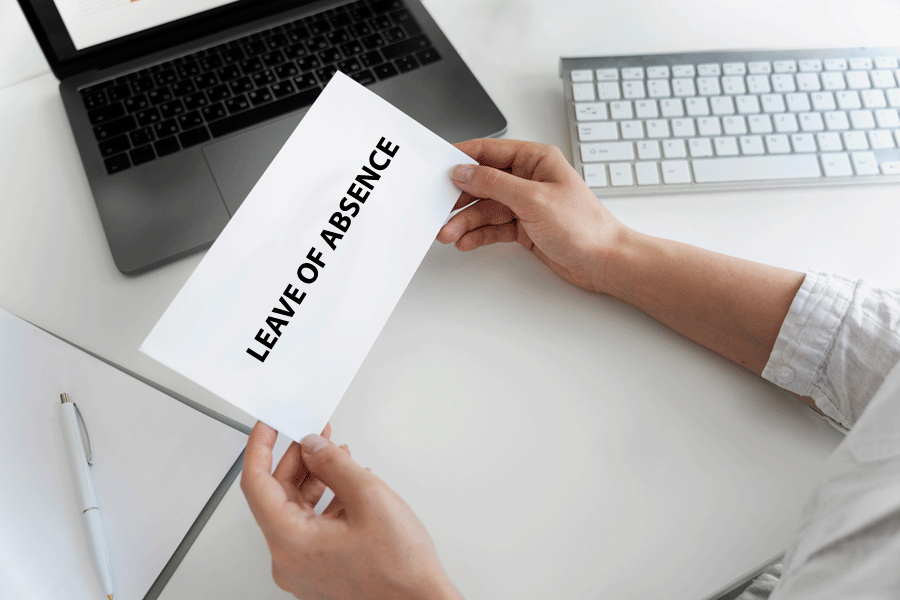Workplaces are official places. Most employers demand that their employees observe strict official dress codes. The main reason why most companies and businesses stress them is because appearance matters. An employee’s appearance can make or break a company’s potential to win over a client.
This is because it either creates a positive or negative impression that reflects on the company’s values and culture. With that in mind, it’s important for a company to establish a fixed and formal stipulation on what type of outfit the employees need to wear.
Dress Code Policy Examples
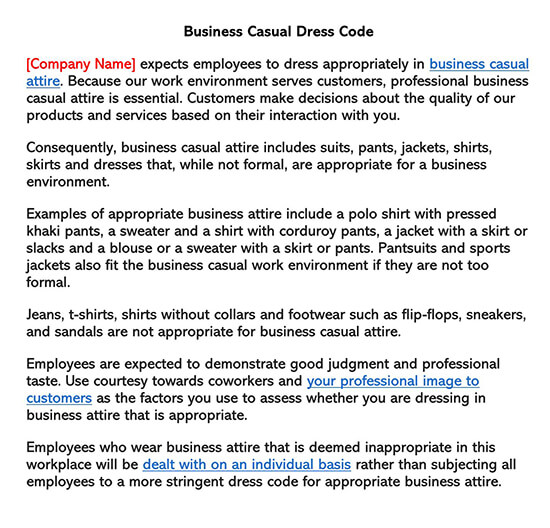
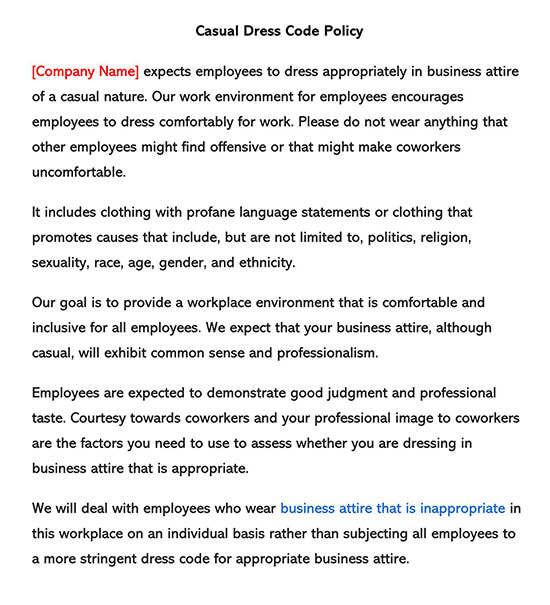
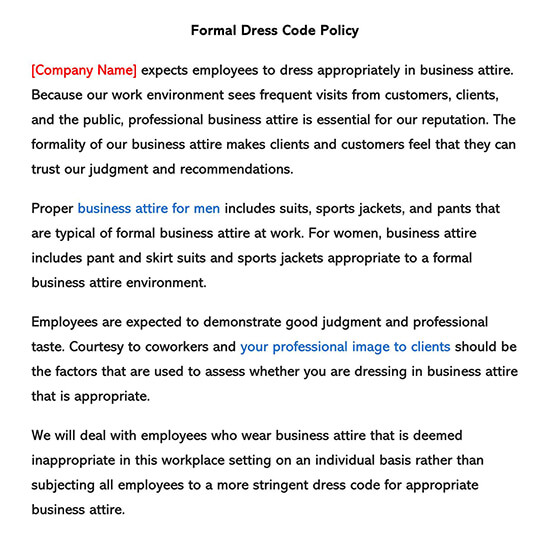
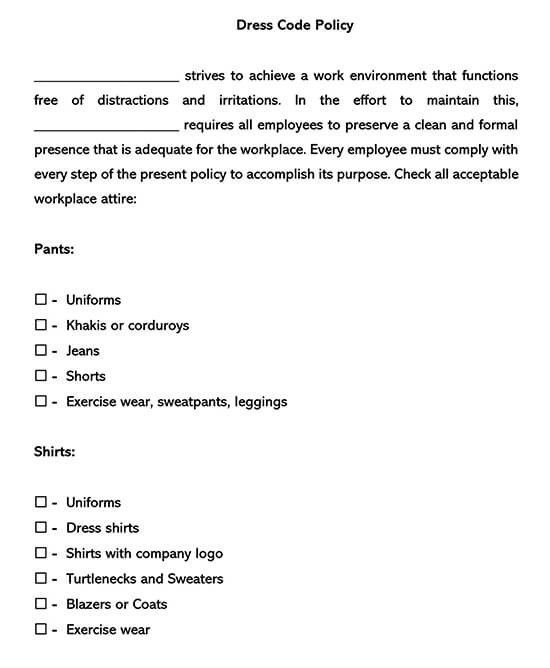
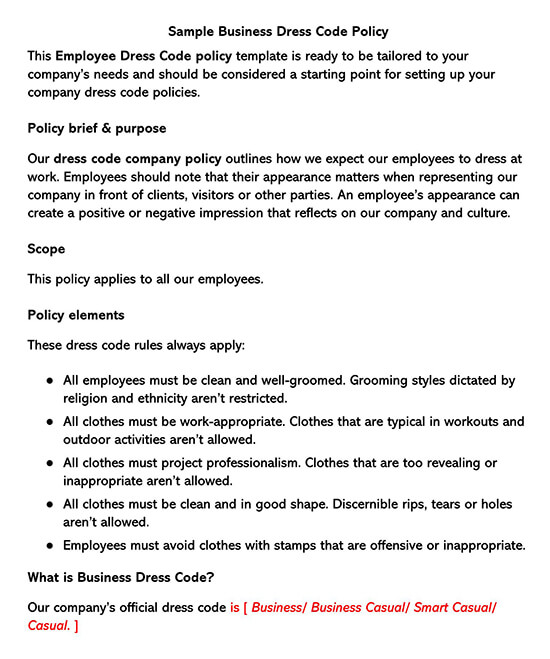
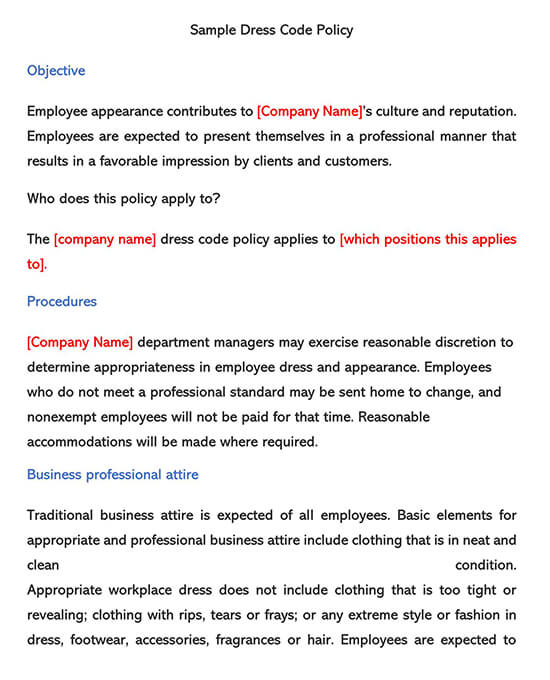
What is the Dress Code Policy?
A dress code policy refers to a document that stipulates the recommended type of clothing that employees need to put on while attending work. Usually, different companies and businesses have different types of dress codes.
I guess you might have noticed that doctors have a particular one that differs from that of lawyers. At the same time, insurance sellers will dress in a different fashion than engineers or teachers. With that in mind, they always state the type of services offered by the given business or company.
Why do You Need a Dress Code Policy at the Workplace?
The majority of employees and employers alike may ask themselves the importance of such a policy. As long as there are no specific federal regulations against it, it are always put in place for the benefit of the company.
Therefore, the following are some of the reasons why your workplace needs one.
It brings workplace cohesion
First and foremost, creating a particular dress code helps create a unique sense of oneness and cohesion. The employees will feel like a group and, hence, pull their efforts towards fulfilling a common purpose.
Reflects on a company’s goals
We are all familiar with the saying, ‘Dress for the job you want, not the job you have. This statement majorly stresses that your clothing should match the type of job you want. Usually, employees are ambassadors for their workplaces. Therefore, in order to reflect the standards of operation as well as the company’s ambition, the employees need to dress appropriately to connote their company.
Customer impressions
If there is one thing to be sure of, it is that it will help improve the impression of your business or organization. Whether you are running a restaurant, retail shop, or any other organization that constantly interacts with customers, a dress code will impress your interactions.
Builds professionalism
Creating a particular dress code can also help convey a professional character to your company. Additionally, it will increase pride for your employees and clients as well.
What to Include in a Dress Code Policy
Usually, it’s up to the employer to determine the type of dress for his or her employees. However, when creating a policy, it’s important that you include employees or their representatives at the decision-making table. This way, they will not only feel included but will also support the policy.
The following are some common elements to include:
- An introduction: The policy document should start with a brief introduction to the type of dresses expected by the employees.
- The target audience: After the introduction, you should mention the people the policy specifically implies.
- General guidelines: Here, you will present the general guidelines on how the policy will work. Also, be sure to include measures that will follow in case of a violation.
- The dress code: Clearly explain the dress code expected and the motive behind it. Also, mention some exemptions to this policy.
- Signatures: Conclude your policy document with space for signatures from relevant parties.
What are the Most Common Types of Workplace Dress Code Policies?
Formal business attire
In any kind of official work setting, formal business attire is the ideal option for employees. Basically, it includes a skirt suit, pantsuits, and a suit and ties for men. The formality levels, however, vary from one business to the other.
Business casual dress codes
This policy allows for different types of casual outfits. It can either be T-shirts, jeans, or shorts, to mention a few.
Summer casuals
If you are approaching summer, your employees might request a more relaxed version of business casual. Therefore, you can issue a policy that allows for light and breathable wear.
Depending on the type of business and the prevailing weather (summer or winter), you can decide what type of policy to implement for your workers. If you are planning to write a professional policy for your company, you might be in the right place. You can download examples and get started.
Frequently Asked Questions
Yes. Once a policy has been put in place, it’s important that you adhere to it. Otherwise, you risk being fired. But first, the employer will request that you change the attire before taking other stringent measures.
Depending on the type of workplace, there will be clearly defined rules for the clothes. These rules will guide you on what clothes you shouldn’t wear during office time.
The following are some examples of clothes commonly prohibited in office setup:
o Flip flops
o Backless tops
o Long shorts
o Yoga pants
o Short skirts etc.
The simple answer is yes. If the office policy prohibits long or shaggy hair, then you need to adhere to that. If you keep long hair contrary to the company’s policy, then the employer will ask you to shave, or else you risk facing strict measures




